Mycoplasma sp Stock Photos and Images
 Mycoplasma bacteria, computer illustration. Mycoplasmas are the smallest cellular organisms known (diameter 0.3-0.9 microns). They resemble bacteria in some respects (some authorities regard them as primitive bacteria), but they differ in that they lack a true cell wall and hence display a variety of forms. They may be spherical, branched or unbranched filaments. Some species are pathogens of humans and animals (cattle, sheep) living on the moist mucosal membranes. In humans Mycoplasma hominis may infect the genital tract, while Mycoplasma pneumoniae causes a pneumonia-like disease of the Stock Photohttps://www.alamy.com/image-license-details/?v=1https://www.alamy.com/mycoplasma-bacteria-computer-illustration-mycoplasmas-are-the-smallest-image150557503.html
Mycoplasma bacteria, computer illustration. Mycoplasmas are the smallest cellular organisms known (diameter 0.3-0.9 microns). They resemble bacteria in some respects (some authorities regard them as primitive bacteria), but they differ in that they lack a true cell wall and hence display a variety of forms. They may be spherical, branched or unbranched filaments. Some species are pathogens of humans and animals (cattle, sheep) living on the moist mucosal membranes. In humans Mycoplasma hominis may infect the genital tract, while Mycoplasma pneumoniae causes a pneumonia-like disease of the Stock Photohttps://www.alamy.com/image-license-details/?v=1https://www.alamy.com/mycoplasma-bacteria-computer-illustration-mycoplasmas-are-the-smallest-image150557503.htmlRFJMXDHK–Mycoplasma bacteria, computer illustration. Mycoplasmas are the smallest cellular organisms known (diameter 0.3-0.9 microns). They resemble bacteria in some respects (some authorities regard them as primitive bacteria), but they differ in that they lack a true cell wall and hence display a variety of forms. They may be spherical, branched or unbranched filaments. Some species are pathogens of humans and animals (cattle, sheep) living on the moist mucosal membranes. In humans Mycoplasma hominis may infect the genital tract, while Mycoplasma pneumoniae causes a pneumonia-like disease of the
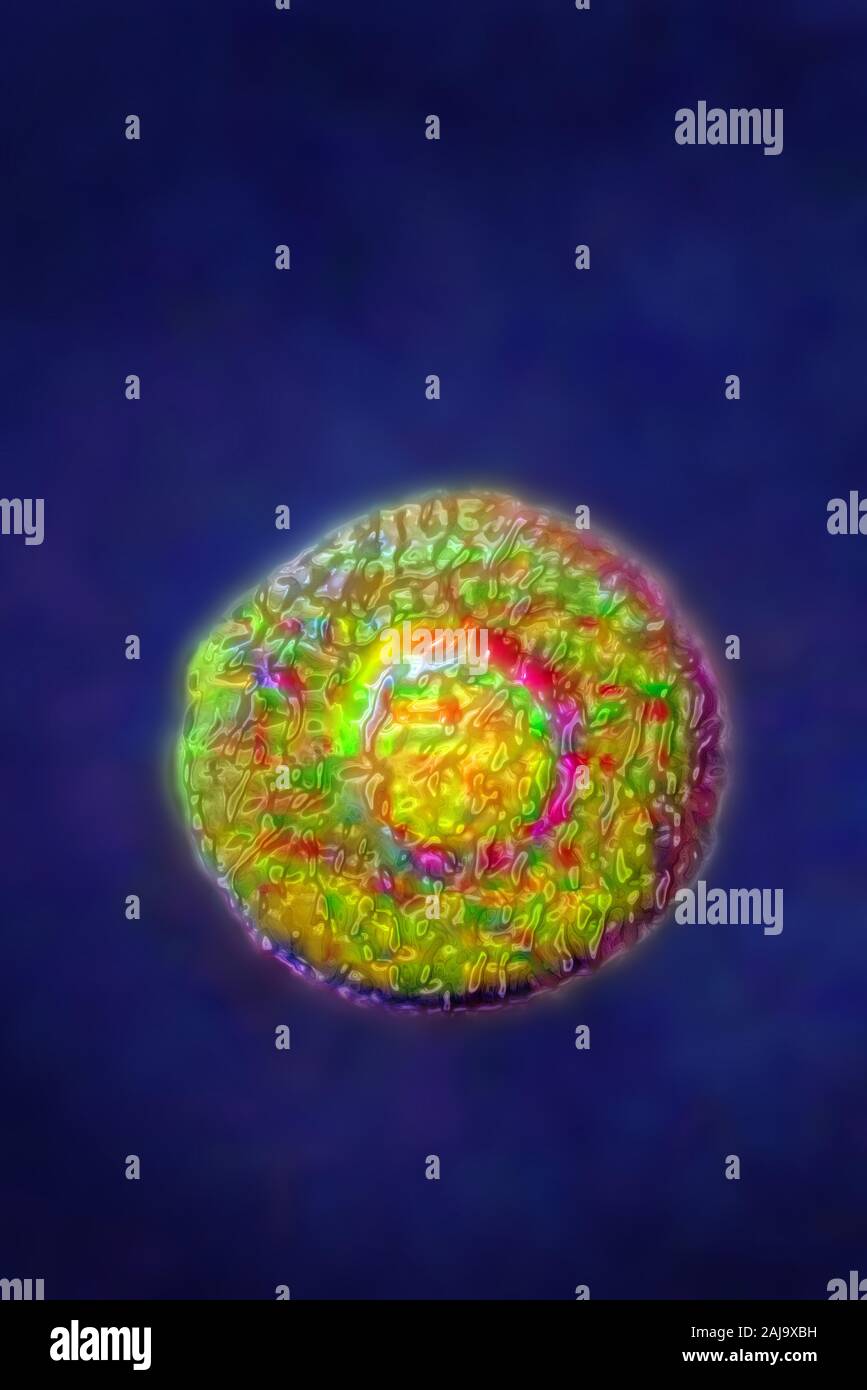 Mycoplasma Stock Photohttps://www.alamy.com/image-license-details/?v=1https://www.alamy.com/mycoplasma-image338279077.html
Mycoplasma Stock Photohttps://www.alamy.com/image-license-details/?v=1https://www.alamy.com/mycoplasma-image338279077.htmlRM2AJ9XBH–Mycoplasma
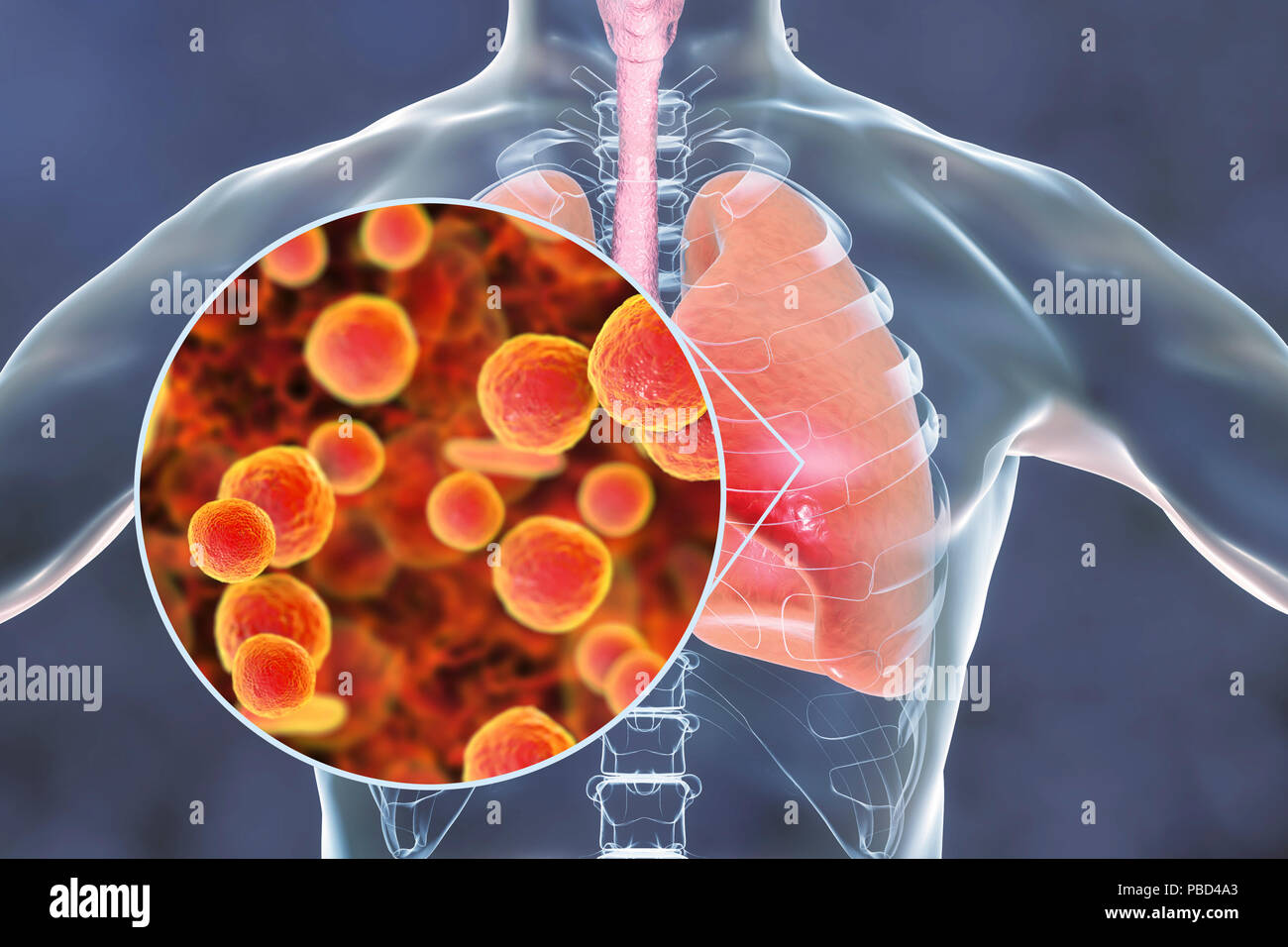 Pneumonia caused by Mycoplasma pneumoniae bacteria, conceptual computer illustration. Stock Photohttps://www.alamy.com/image-license-details/?v=1https://www.alamy.com/pneumonia-caused-by-mycoplasma-pneumoniae-bacteria-conceptual-computer-illustration-image213574427.html
Pneumonia caused by Mycoplasma pneumoniae bacteria, conceptual computer illustration. Stock Photohttps://www.alamy.com/image-license-details/?v=1https://www.alamy.com/pneumonia-caused-by-mycoplasma-pneumoniae-bacteria-conceptual-computer-illustration-image213574427.htmlRFPBD4A3–Pneumonia caused by Mycoplasma pneumoniae bacteria, conceptual computer illustration.
 Mycoplasma bacteria, computer illustration. Mycoplasmas are the smallest cellular organisms known (diameter 0.3-0.9 microns). They resemble bacteria i Stock Photohttps://www.alamy.com/image-license-details/?v=1https://www.alamy.com/mycoplasma-bacteria-computer-illustration-mycoplasmas-are-the-smallest-cellular-organisms-known-diameter-03-09-microns-they-resemble-bacteria-i-image555085016.html
Mycoplasma bacteria, computer illustration. Mycoplasmas are the smallest cellular organisms known (diameter 0.3-0.9 microns). They resemble bacteria i Stock Photohttps://www.alamy.com/image-license-details/?v=1https://www.alamy.com/mycoplasma-bacteria-computer-illustration-mycoplasmas-are-the-smallest-cellular-organisms-known-diameter-03-09-microns-they-resemble-bacteria-i-image555085016.htmlRF2R728GT–Mycoplasma bacteria, computer illustration. Mycoplasmas are the smallest cellular organisms known (diameter 0.3-0.9 microns). They resemble bacteria i
 Mycoplasma Stock Photohttps://www.alamy.com/image-license-details/?v=1https://www.alamy.com/mycoplasma-image338279076.html
Mycoplasma Stock Photohttps://www.alamy.com/image-license-details/?v=1https://www.alamy.com/mycoplasma-image338279076.htmlRM2AJ9XBG–Mycoplasma
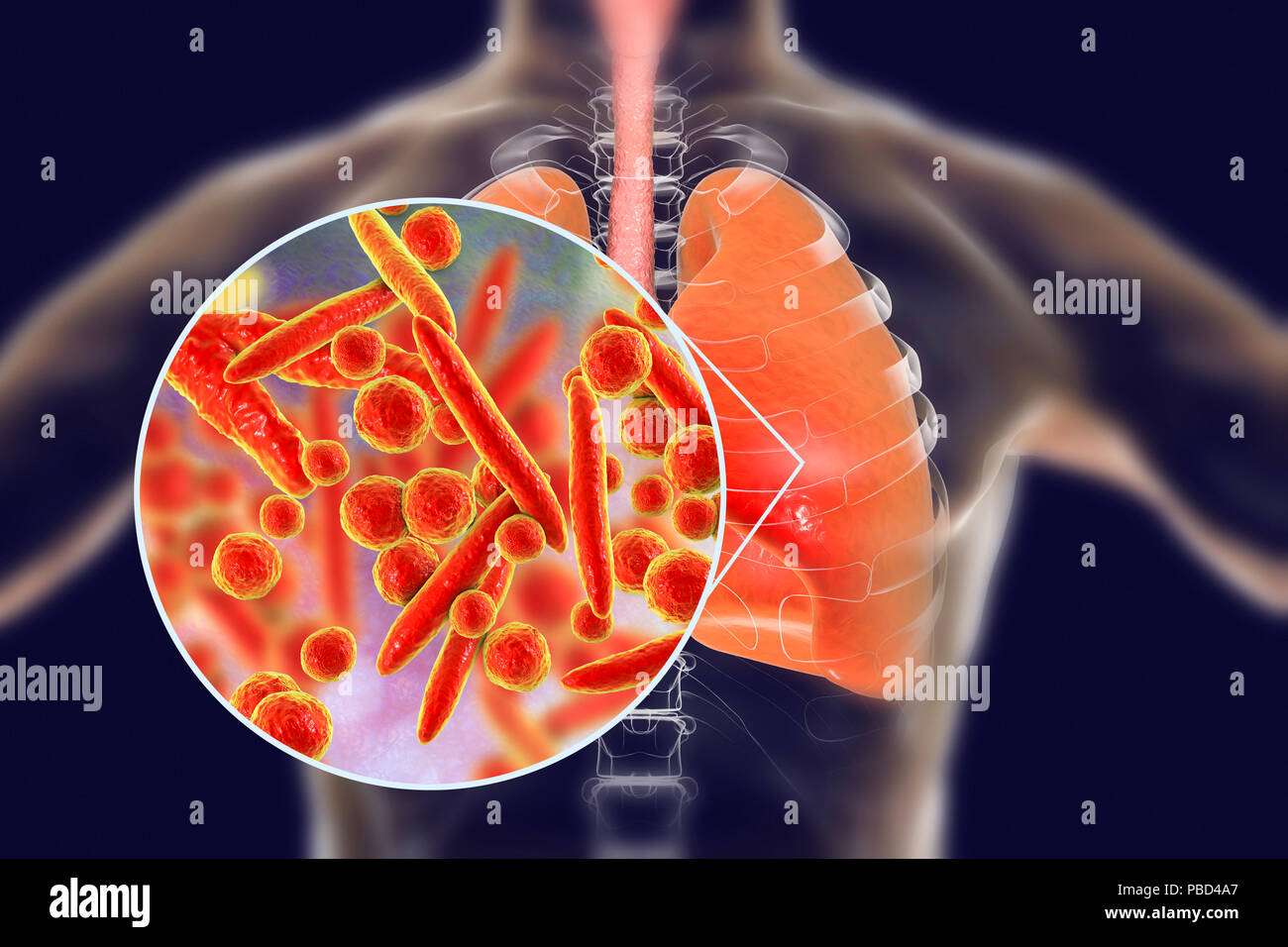 Pneumonia caused by Mycoplasma pneumoniae bacteria, conceptual computer illustration. Stock Photohttps://www.alamy.com/image-license-details/?v=1https://www.alamy.com/pneumonia-caused-by-mycoplasma-pneumoniae-bacteria-conceptual-computer-illustration-image213574431.html
Pneumonia caused by Mycoplasma pneumoniae bacteria, conceptual computer illustration. Stock Photohttps://www.alamy.com/image-license-details/?v=1https://www.alamy.com/pneumonia-caused-by-mycoplasma-pneumoniae-bacteria-conceptual-computer-illustration-image213574431.htmlRFPBD4A7–Pneumonia caused by Mycoplasma pneumoniae bacteria, conceptual computer illustration.
 Mycoplasma bacteria, computer illustration. Mycoplasmas are the smallest cellular organisms known (diameter 0.3-0.9 microns). They resemble bacteria i Stock Photohttps://www.alamy.com/image-license-details/?v=1https://www.alamy.com/mycoplasma-bacteria-computer-illustration-mycoplasmas-are-the-smallest-cellular-organisms-known-diameter-03-09-microns-they-resemble-bacteria-i-image555085030.html
Mycoplasma bacteria, computer illustration. Mycoplasmas are the smallest cellular organisms known (diameter 0.3-0.9 microns). They resemble bacteria i Stock Photohttps://www.alamy.com/image-license-details/?v=1https://www.alamy.com/mycoplasma-bacteria-computer-illustration-mycoplasmas-are-the-smallest-cellular-organisms-known-diameter-03-09-microns-they-resemble-bacteria-i-image555085030.htmlRF2R728HA–Mycoplasma bacteria, computer illustration. Mycoplasmas are the smallest cellular organisms known (diameter 0.3-0.9 microns). They resemble bacteria i
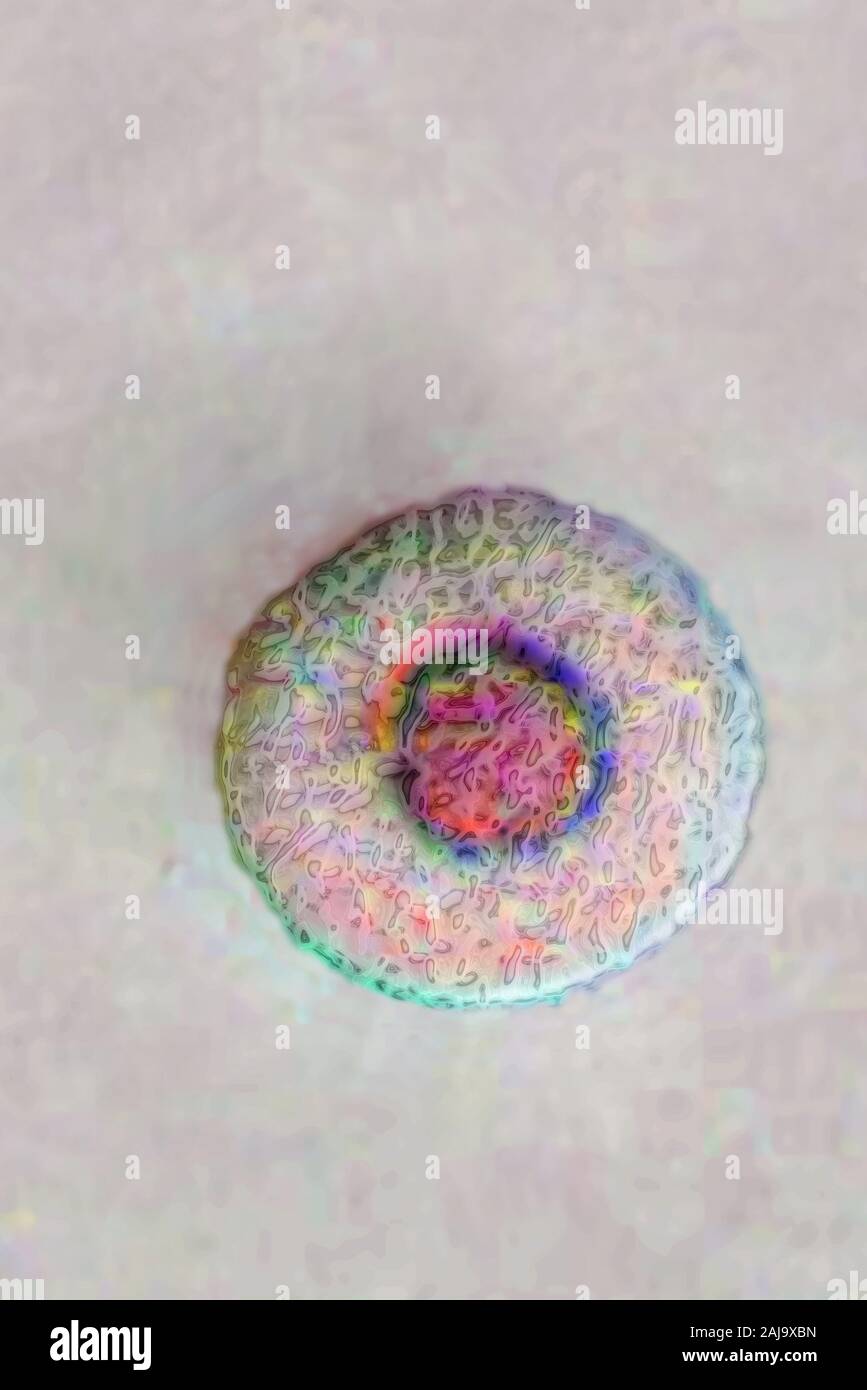 Mycoplasma Stock Photohttps://www.alamy.com/image-license-details/?v=1https://www.alamy.com/mycoplasma-image338279081.html
Mycoplasma Stock Photohttps://www.alamy.com/image-license-details/?v=1https://www.alamy.com/mycoplasma-image338279081.htmlRM2AJ9XBN–Mycoplasma
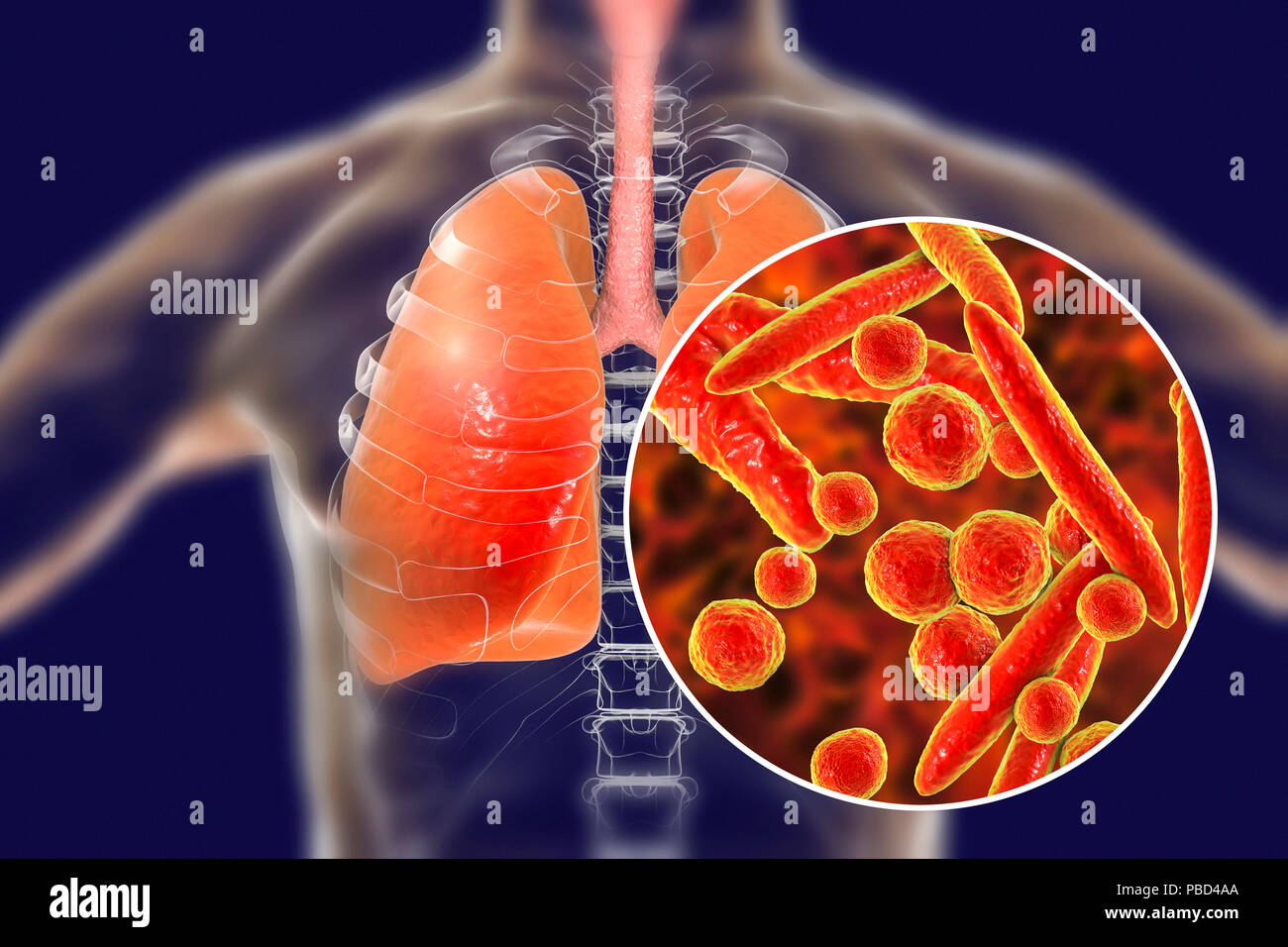 Pneumonia caused by Mycoplasma pneumoniae bacteria, conceptual computer illustration. Stock Photohttps://www.alamy.com/image-license-details/?v=1https://www.alamy.com/pneumonia-caused-by-mycoplasma-pneumoniae-bacteria-conceptual-computer-illustration-image213574434.html
Pneumonia caused by Mycoplasma pneumoniae bacteria, conceptual computer illustration. Stock Photohttps://www.alamy.com/image-license-details/?v=1https://www.alamy.com/pneumonia-caused-by-mycoplasma-pneumoniae-bacteria-conceptual-computer-illustration-image213574434.htmlRFPBD4AA–Pneumonia caused by Mycoplasma pneumoniae bacteria, conceptual computer illustration.
 Mycoplasma bacteria, computer illustration. Mycoplasmas are the smallest cellular organisms known (diameter 0.3-0.9 microns). They resemble bacteria in some respects (some authorities regard them as primitive bacteria), but they differ in that they lack a true cell wall and hence display a variety of forms. They may be spherical, branched or unbranched filaments. Some species are pathogens of humans and animals (cattle, sheep) living on the moist mucosal membranes. In humans Mycoplasma hominis may infect the genital tract, while Mycoplasma pneumoniae causes a pneumonia-like disease of the Stock Photohttps://www.alamy.com/image-license-details/?v=1https://www.alamy.com/mycoplasma-bacteria-computer-illustration-mycoplasmas-are-the-smallest-image150557506.html
Mycoplasma bacteria, computer illustration. Mycoplasmas are the smallest cellular organisms known (diameter 0.3-0.9 microns). They resemble bacteria in some respects (some authorities regard them as primitive bacteria), but they differ in that they lack a true cell wall and hence display a variety of forms. They may be spherical, branched or unbranched filaments. Some species are pathogens of humans and animals (cattle, sheep) living on the moist mucosal membranes. In humans Mycoplasma hominis may infect the genital tract, while Mycoplasma pneumoniae causes a pneumonia-like disease of the Stock Photohttps://www.alamy.com/image-license-details/?v=1https://www.alamy.com/mycoplasma-bacteria-computer-illustration-mycoplasmas-are-the-smallest-image150557506.htmlRFJMXDHP–Mycoplasma bacteria, computer illustration. Mycoplasmas are the smallest cellular organisms known (diameter 0.3-0.9 microns). They resemble bacteria in some respects (some authorities regard them as primitive bacteria), but they differ in that they lack a true cell wall and hence display a variety of forms. They may be spherical, branched or unbranched filaments. Some species are pathogens of humans and animals (cattle, sheep) living on the moist mucosal membranes. In humans Mycoplasma hominis may infect the genital tract, while Mycoplasma pneumoniae causes a pneumonia-like disease of the
 Mycoplasma Stock Photohttps://www.alamy.com/image-license-details/?v=1https://www.alamy.com/mycoplasma-image338279079.html
Mycoplasma Stock Photohttps://www.alamy.com/image-license-details/?v=1https://www.alamy.com/mycoplasma-image338279079.htmlRM2AJ9XBK–Mycoplasma
 Mycoplasma bacteria, computer illustration. Mycoplasmas are the smallest cellular organisms known (diameter 0.3-0.9 microns). They resemble bacteria in some respects (some authorities regard them as primitive bacteria), but they differ in that they lack a true cell wall and hence display a variety of forms. They may be spherical, branched or unbranched filaments. Some species are pathogens of humans and animals (cattle, sheep) living on the moist mucosal membranes. In humans Mycoplasma hominis may infect the genital tract, while Mycoplasma pneumoniae causes a pneumonia-like disease of the Stock Photohttps://www.alamy.com/image-license-details/?v=1https://www.alamy.com/mycoplasma-bacteria-computer-illustration-mycoplasmas-are-the-smallest-image150557505.html
Mycoplasma bacteria, computer illustration. Mycoplasmas are the smallest cellular organisms known (diameter 0.3-0.9 microns). They resemble bacteria in some respects (some authorities regard them as primitive bacteria), but they differ in that they lack a true cell wall and hence display a variety of forms. They may be spherical, branched or unbranched filaments. Some species are pathogens of humans and animals (cattle, sheep) living on the moist mucosal membranes. In humans Mycoplasma hominis may infect the genital tract, while Mycoplasma pneumoniae causes a pneumonia-like disease of the Stock Photohttps://www.alamy.com/image-license-details/?v=1https://www.alamy.com/mycoplasma-bacteria-computer-illustration-mycoplasmas-are-the-smallest-image150557505.htmlRFJMXDHN–Mycoplasma bacteria, computer illustration. Mycoplasmas are the smallest cellular organisms known (diameter 0.3-0.9 microns). They resemble bacteria in some respects (some authorities regard them as primitive bacteria), but they differ in that they lack a true cell wall and hence display a variety of forms. They may be spherical, branched or unbranched filaments. Some species are pathogens of humans and animals (cattle, sheep) living on the moist mucosal membranes. In humans Mycoplasma hominis may infect the genital tract, while Mycoplasma pneumoniae causes a pneumonia-like disease of the
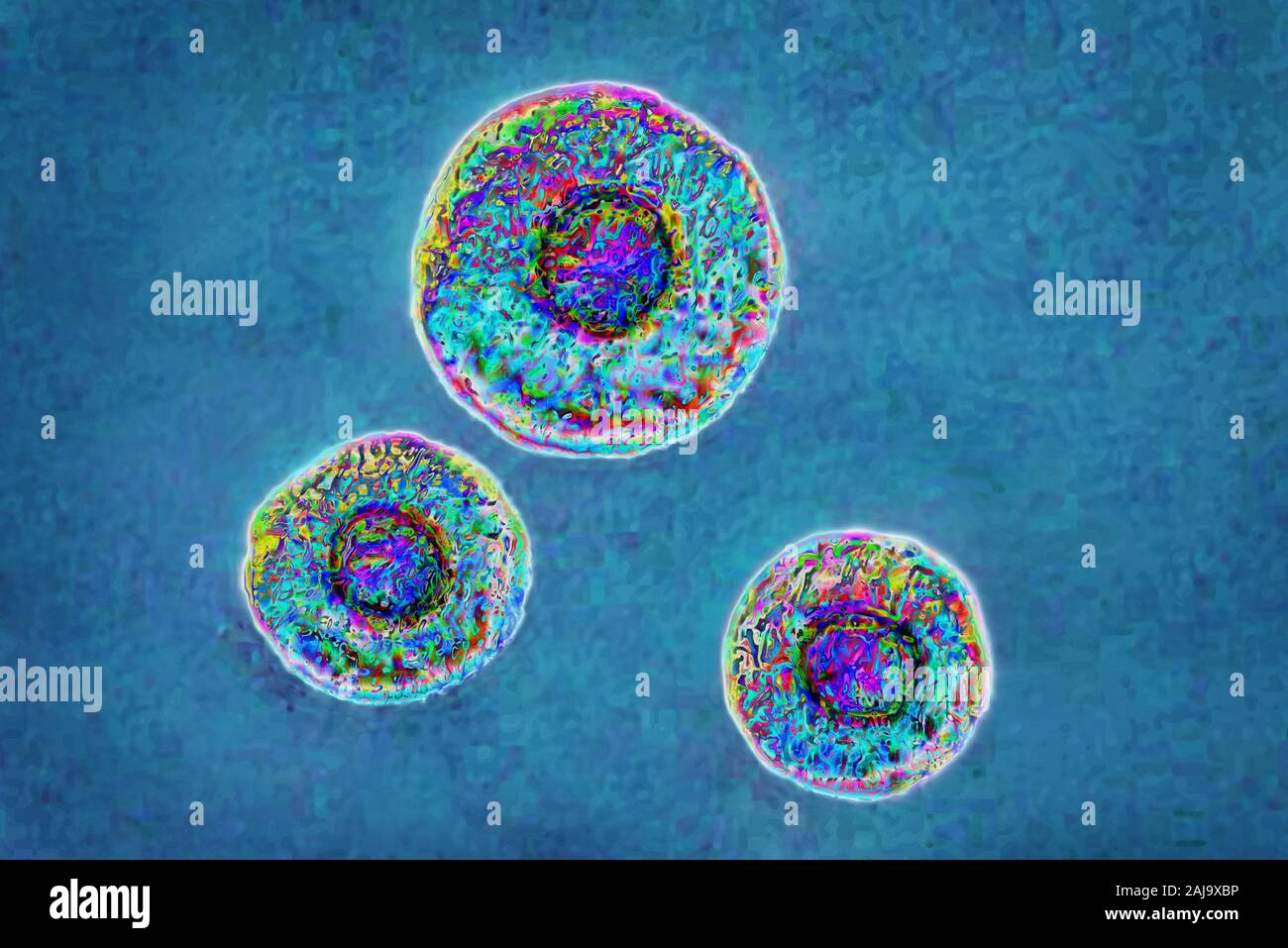 Mycoplasmas Stock Photohttps://www.alamy.com/image-license-details/?v=1https://www.alamy.com/mycoplasmas-image338279082.html
Mycoplasmas Stock Photohttps://www.alamy.com/image-license-details/?v=1https://www.alamy.com/mycoplasmas-image338279082.htmlRM2AJ9XBP–Mycoplasmas
 Mycoplasma bacteria, computer illustration. Mycoplasmas are the smallest cellular organisms known (diameter 0.3-0.9 microns). They resemble bacteria in some respects (some authorities regard them as primitive bacteria), but they differ in that they lack a true cell wall and hence display a variety of forms. They may be spherical, branched or unbranched filaments. Some species are pathogens of humans and animals (cattle, sheep) living on the moist mucosal membranes. In humans Mycoplasma hominis may infect the genital tract, while Mycoplasma pneumoniae causes a pneumonia-like disease of the Stock Photohttps://www.alamy.com/image-license-details/?v=1https://www.alamy.com/mycoplasma-bacteria-computer-illustration-mycoplasmas-are-the-smallest-image150557504.html
Mycoplasma bacteria, computer illustration. Mycoplasmas are the smallest cellular organisms known (diameter 0.3-0.9 microns). They resemble bacteria in some respects (some authorities regard them as primitive bacteria), but they differ in that they lack a true cell wall and hence display a variety of forms. They may be spherical, branched or unbranched filaments. Some species are pathogens of humans and animals (cattle, sheep) living on the moist mucosal membranes. In humans Mycoplasma hominis may infect the genital tract, while Mycoplasma pneumoniae causes a pneumonia-like disease of the Stock Photohttps://www.alamy.com/image-license-details/?v=1https://www.alamy.com/mycoplasma-bacteria-computer-illustration-mycoplasmas-are-the-smallest-image150557504.htmlRFJMXDHM–Mycoplasma bacteria, computer illustration. Mycoplasmas are the smallest cellular organisms known (diameter 0.3-0.9 microns). They resemble bacteria in some respects (some authorities regard them as primitive bacteria), but they differ in that they lack a true cell wall and hence display a variety of forms. They may be spherical, branched or unbranched filaments. Some species are pathogens of humans and animals (cattle, sheep) living on the moist mucosal membranes. In humans Mycoplasma hominis may infect the genital tract, while Mycoplasma pneumoniae causes a pneumonia-like disease of the
 Mycoplasma bacteria, computer illustration. Mycoplasmas are the smallest cellular organisms known (diameter 0.3-0.9 microns). They resemble bacteria in some respects (some authorities regard them as primitive bacteria), but they differ in that they lack a true cell wall and hence display a variety of forms. They may be spherical, branched or unbranched filaments. Some species are pathogens of humans and animals (cattle, sheep) living on the moist mucosal membranes. In humans Mycoplasma hominis may infect the genital tract; Mycoplasma pneumoniae causes a pneumonia-like disease of the lungs. Stock Photohttps://www.alamy.com/image-license-details/?v=1https://www.alamy.com/stock-photo-mycoplasma-bacteria-computer-illustration-mycoplasmas-are-the-smallest-147221522.html
Mycoplasma bacteria, computer illustration. Mycoplasmas are the smallest cellular organisms known (diameter 0.3-0.9 microns). They resemble bacteria in some respects (some authorities regard them as primitive bacteria), but they differ in that they lack a true cell wall and hence display a variety of forms. They may be spherical, branched or unbranched filaments. Some species are pathogens of humans and animals (cattle, sheep) living on the moist mucosal membranes. In humans Mycoplasma hominis may infect the genital tract; Mycoplasma pneumoniae causes a pneumonia-like disease of the lungs. Stock Photohttps://www.alamy.com/image-license-details/?v=1https://www.alamy.com/stock-photo-mycoplasma-bacteria-computer-illustration-mycoplasmas-are-the-smallest-147221522.htmlRFJFEEFE–Mycoplasma bacteria, computer illustration. Mycoplasmas are the smallest cellular organisms known (diameter 0.3-0.9 microns). They resemble bacteria in some respects (some authorities regard them as primitive bacteria), but they differ in that they lack a true cell wall and hence display a variety of forms. They may be spherical, branched or unbranched filaments. Some species are pathogens of humans and animals (cattle, sheep) living on the moist mucosal membranes. In humans Mycoplasma hominis may infect the genital tract; Mycoplasma pneumoniae causes a pneumonia-like disease of the lungs.
 Mycoplasmas Stock Photohttps://www.alamy.com/image-license-details/?v=1https://www.alamy.com/mycoplasmas-image338279080.html
Mycoplasmas Stock Photohttps://www.alamy.com/image-license-details/?v=1https://www.alamy.com/mycoplasmas-image338279080.htmlRM2AJ9XBM–Mycoplasmas
 Mycoplasma bacteria, computer illustration. Mycoplasmas are the smallest cellular organisms known (diameter 0.3-0.9 microns). They resemble bacteria in some respects (some authorities regard them as primitive bacteria), but they differ in that they lack a true cell wall and hence display a variety of forms. They may be spherical, branched or unbranched filaments. Some species are pathogens of humans and animals (cattle, sheep) living on the moist mucosal membranes. In humans Mycoplasma hominis may infect the genital tract; Mycoplasma pneumoniae causes a pneumonia-like disease of the lungs. Stock Photohttps://www.alamy.com/image-license-details/?v=1https://www.alamy.com/stock-photo-mycoplasma-bacteria-computer-illustration-mycoplasmas-are-the-smallest-147221521.html
Mycoplasma bacteria, computer illustration. Mycoplasmas are the smallest cellular organisms known (diameter 0.3-0.9 microns). They resemble bacteria in some respects (some authorities regard them as primitive bacteria), but they differ in that they lack a true cell wall and hence display a variety of forms. They may be spherical, branched or unbranched filaments. Some species are pathogens of humans and animals (cattle, sheep) living on the moist mucosal membranes. In humans Mycoplasma hominis may infect the genital tract; Mycoplasma pneumoniae causes a pneumonia-like disease of the lungs. Stock Photohttps://www.alamy.com/image-license-details/?v=1https://www.alamy.com/stock-photo-mycoplasma-bacteria-computer-illustration-mycoplasmas-are-the-smallest-147221521.htmlRFJFEEFD–Mycoplasma bacteria, computer illustration. Mycoplasmas are the smallest cellular organisms known (diameter 0.3-0.9 microns). They resemble bacteria in some respects (some authorities regard them as primitive bacteria), but they differ in that they lack a true cell wall and hence display a variety of forms. They may be spherical, branched or unbranched filaments. Some species are pathogens of humans and animals (cattle, sheep) living on the moist mucosal membranes. In humans Mycoplasma hominis may infect the genital tract; Mycoplasma pneumoniae causes a pneumonia-like disease of the lungs.
 Mycoplasmas Stock Photohttps://www.alamy.com/image-license-details/?v=1https://www.alamy.com/mycoplasmas-image338279071.html
Mycoplasmas Stock Photohttps://www.alamy.com/image-license-details/?v=1https://www.alamy.com/mycoplasmas-image338279071.htmlRM2AJ9XBB–Mycoplasmas
 Mycoplasma bacteria, computer illustration. Mycoplasmas are the smallest cellular organisms known (diameter 0.3-0.9 microns). They resemble bacteria in some respects (some authorities regard them as primitive bacteria), but they differ in that they lack a true cell wall and hence display a variety of forms. They may be spherical, branched or unbranched filaments. Some species are pathogens of humans and animals (cattle, sheep) living on the moist mucosal membranes. In humans Mycoplasma hominis may infect the genital tract; Mycoplasma pneumoniae causes a pneumonia-like disease of the lungs. Stock Photohttps://www.alamy.com/image-license-details/?v=1https://www.alamy.com/stock-photo-mycoplasma-bacteria-computer-illustration-mycoplasmas-are-the-smallest-147221526.html
Mycoplasma bacteria, computer illustration. Mycoplasmas are the smallest cellular organisms known (diameter 0.3-0.9 microns). They resemble bacteria in some respects (some authorities regard them as primitive bacteria), but they differ in that they lack a true cell wall and hence display a variety of forms. They may be spherical, branched or unbranched filaments. Some species are pathogens of humans and animals (cattle, sheep) living on the moist mucosal membranes. In humans Mycoplasma hominis may infect the genital tract; Mycoplasma pneumoniae causes a pneumonia-like disease of the lungs. Stock Photohttps://www.alamy.com/image-license-details/?v=1https://www.alamy.com/stock-photo-mycoplasma-bacteria-computer-illustration-mycoplasmas-are-the-smallest-147221526.htmlRFJFEEFJ–Mycoplasma bacteria, computer illustration. Mycoplasmas are the smallest cellular organisms known (diameter 0.3-0.9 microns). They resemble bacteria in some respects (some authorities regard them as primitive bacteria), but they differ in that they lack a true cell wall and hence display a variety of forms. They may be spherical, branched or unbranched filaments. Some species are pathogens of humans and animals (cattle, sheep) living on the moist mucosal membranes. In humans Mycoplasma hominis may infect the genital tract; Mycoplasma pneumoniae causes a pneumonia-like disease of the lungs.
 Pneumonia caused by Mycoplasma pneumoniae bacteria, conceptual computer illustration. Mycoplasmas are the smallest cellular organisms known (diameter Stock Photohttps://www.alamy.com/image-license-details/?v=1https://www.alamy.com/pneumonia-caused-by-mycoplasma-pneumoniae-bacteria-conceptual-computer-illustration-mycoplasmas-are-the-smallest-cellular-organisms-known-diameter-image223398659.html
Pneumonia caused by Mycoplasma pneumoniae bacteria, conceptual computer illustration. Mycoplasmas are the smallest cellular organisms known (diameter Stock Photohttps://www.alamy.com/image-license-details/?v=1https://www.alamy.com/pneumonia-caused-by-mycoplasma-pneumoniae-bacteria-conceptual-computer-illustration-mycoplasmas-are-the-smallest-cellular-organisms-known-diameter-image223398659.htmlRFPYCK7F–Pneumonia caused by Mycoplasma pneumoniae bacteria, conceptual computer illustration. Mycoplasmas are the smallest cellular organisms known (diameter
 Mycoplasmas Stock Photohttps://www.alamy.com/image-license-details/?v=1https://www.alamy.com/mycoplasmas-image338279059.html
Mycoplasmas Stock Photohttps://www.alamy.com/image-license-details/?v=1https://www.alamy.com/mycoplasmas-image338279059.htmlRM2AJ9XAY–Mycoplasmas
 Pneumonia caused by Mycoplasma pneumoniae bacteria, conceptual computer illustration. Mycoplasmas are the smallest cellular organisms known (diameter Stock Photohttps://www.alamy.com/image-license-details/?v=1https://www.alamy.com/pneumonia-caused-by-mycoplasma-pneumoniae-bacteria-conceptual-computer-illustration-mycoplasmas-are-the-smallest-cellular-organisms-known-diameter-image223398655.html
Pneumonia caused by Mycoplasma pneumoniae bacteria, conceptual computer illustration. Mycoplasmas are the smallest cellular organisms known (diameter Stock Photohttps://www.alamy.com/image-license-details/?v=1https://www.alamy.com/pneumonia-caused-by-mycoplasma-pneumoniae-bacteria-conceptual-computer-illustration-mycoplasmas-are-the-smallest-cellular-organisms-known-diameter-image223398655.htmlRFPYCK7B–Pneumonia caused by Mycoplasma pneumoniae bacteria, conceptual computer illustration. Mycoplasmas are the smallest cellular organisms known (diameter
 Pneumonia caused by Mycoplasma pneumoniae bacteria, conceptual computer illustration. Mycoplasmas are the smallest cellular organisms known (diameter Stock Photohttps://www.alamy.com/image-license-details/?v=1https://www.alamy.com/pneumonia-caused-by-mycoplasma-pneumoniae-bacteria-conceptual-computer-illustration-mycoplasmas-are-the-smallest-cellular-organisms-known-diameter-image223398658.html
Pneumonia caused by Mycoplasma pneumoniae bacteria, conceptual computer illustration. Mycoplasmas are the smallest cellular organisms known (diameter Stock Photohttps://www.alamy.com/image-license-details/?v=1https://www.alamy.com/pneumonia-caused-by-mycoplasma-pneumoniae-bacteria-conceptual-computer-illustration-mycoplasmas-are-the-smallest-cellular-organisms-known-diameter-image223398658.htmlRFPYCK7E–Pneumonia caused by Mycoplasma pneumoniae bacteria, conceptual computer illustration. Mycoplasmas are the smallest cellular organisms known (diameter
 Pneumonia caused by Mycoplasma pneumoniae bacteria, conceptual computer illustration. Mycoplasmas are the smallest cellular organisms known (diameter Stock Photohttps://www.alamy.com/image-license-details/?v=1https://www.alamy.com/pneumonia-caused-by-mycoplasma-pneumoniae-bacteria-conceptual-computer-illustration-mycoplasmas-are-the-smallest-cellular-organisms-known-diameter-image223398656.html
Pneumonia caused by Mycoplasma pneumoniae bacteria, conceptual computer illustration. Mycoplasmas are the smallest cellular organisms known (diameter Stock Photohttps://www.alamy.com/image-license-details/?v=1https://www.alamy.com/pneumonia-caused-by-mycoplasma-pneumoniae-bacteria-conceptual-computer-illustration-mycoplasmas-are-the-smallest-cellular-organisms-known-diameter-image223398656.htmlRFPYCK7C–Pneumonia caused by Mycoplasma pneumoniae bacteria, conceptual computer illustration. Mycoplasmas are the smallest cellular organisms known (diameter